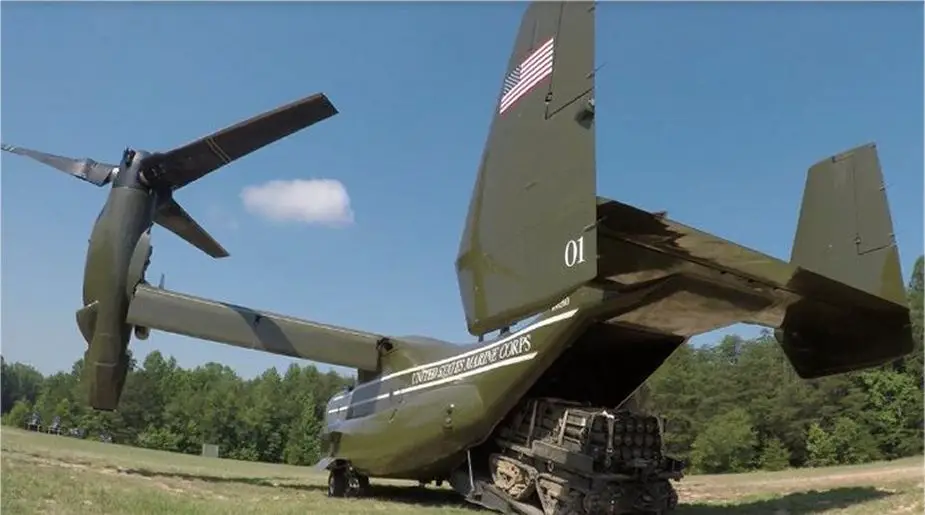Stratom XR-P robot demonstrates autonomous loading unloading from MV-22 Osprey
Colorado-based Stratom’s new eXpeditionary Robotic-Platform, or XR-P, was recently demonstrated by the U.S. Marine Corps, which used it to autonomously load and unload supplies from an MV-22 Osprey vertical takeoff and landing aircraft. Stratom has been working on the XR-P for about three years, in response to a Small Business Innovation Research proposal for resupply systems to work with the MV-22.

Autonomously load and unload supplies of Stratom XR-P (eXpeditionary Robotic-Platform) from an MV-22 Osprey vertical takeoff and landing aircraft.
Stratom has been working on the XR-P for about three years, in response to a Small Business Innovation Research proposal for resupply systems to work with the MV-22.
The main benefit of the XR-P is that it can autonomously drive in and out of the MV-22 while carrying more than 2,400 pounds of supplies, greatly reducing the manpower needed to unload supplies or ammunition from the aircraft. The XR-P can also tow up to 1,800 pounds with a full load.
Marine Corps officials “were amazed at how quickly it could be loaded and unloaded in and out of the aircraft,” Stratom CEO Mark Gordon tells AUVSI.
By cutting resupply mission time, the XR-P also increases the amount of resupply sorties and cuts down on aircraft fuel consumption, according to the company.
The eXpeditionary Robotic-Platform provides increased expeditionary, long range, and mobile capability to support standard logistics resupply, as well as the ability to perform logistics resupply in austere and special operations environments.
The XR-P can quickly provide up to 1,225 kg of critical supplies to the Warfighter on the ground, as well as a wide range of resupply and transport tasks such as transporting a surgical unit or providing water, food, and supplies to a forward operating base or in support of a humanitarian relief effort. The XR-P can tow up to 815 kg while fully loaded, allowing the system to provide a total of 2,050 kg in cargo resupply.
By automating various aspects of the transport task of the resupply mission, especially the unloading in austere and hostile landing zones, the Warfighter’s exposure is significantly reduced. Since the process leverages automation, fewer personnel are required to load, unload and transport the cargo. It is also expected that the utilization of automation will radically reduce mission duration, increasing the number of supply missions that can be executed in addition to lowering mission resupply costs. The XR-P is operated using teleoperative and / or waypoint control from a handheld control unit and has a modular design to support multiple mission modules.


























